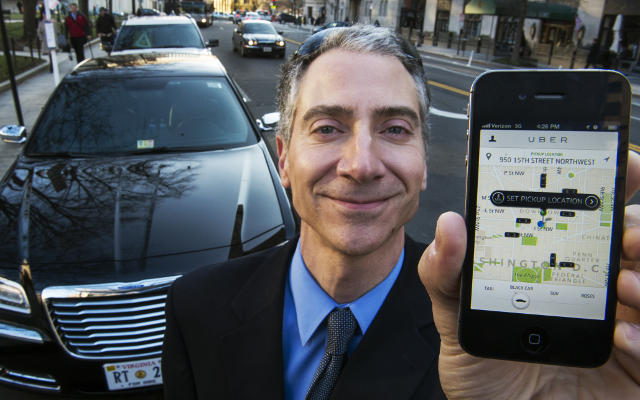All I Want for Christmas Is an On-Demand Uber Ride
Emily Goff /
Taxi and limousine companies must wish they themselves had thought of Uber, an app-based service that connects drivers with passengers and eliminates the need for cash payment. Uninhibited by the regulatory hurdles that plague conventional taxi service (if you can call it “service”), Uber is revolutionizing urban transportation.
Uber is also known for its “surprise-and-delight” campaigns, which have included Christmas tree delivery, on-demand cuddle time with kittens from the Humane Society, and scoops of ice cream on National Ice Cream Day. Try to imagine what it would take for one of the over-regulated taxi companies to win approval for any such promotion from the various councils and commissions that control every aspect of taxi service in large cities.
Even some taxi drivers have switched to driving for UberX—the company’s service that uses midsize cars (instead of the traditional black-car service) and has a lower base fare. It’s 18 percent cheaper than a taxi in Washington, D.C., for example, and drivers can make up the difference with more trips.
Yet the service is meeting sustained resistance from regulators and taxi unions.
D.C. taxi commissioner Ron Linton, for example, most recently is fighting the UberX service. He claims, “We’re not shutting Uber down. We’re not shutting anyone down. We’re trying to find the perfect balance to allow everyone to compete fairly.”
Oh boy. Whenever a government official starts talking about “fairness,” you can bet that consumers will lose. Despite his claims, Linton’s attempts to force Uber under the weight of outdated regulations would kill the very innovations that provide enormous benefits to the public.
The conventional taxi business is a cartel. The medallion system artificially caps the supply of drivers who need not satisfy customers—much less build brand loyalty—to stay in business. Regulated fares do not fluctuate with demand for service and remove the profit incentive for drivers to work when the demand for rides is high. Unlike Uber, which allows passengers to rate drivers instantly, the one-and-done nature of riding with conventional taxi drivers discourages feedback and the resolution of complaints. Further, customers who live in lower-income, lower-density neighborhoods can actually get a ride with Uber, unlike with taxi drivers, who may illegally decline a fare or refuse to waste the gas driving around the sparsely populated area to find the next fare.
There is a reason Uber is already operating in 24 countries and counting. It offers its passengers a high-quality service that they cannot otherwise get at a competitive cost. It empowers drivers—many of them small businessmen—with opportunity and an efficient way to do business. And because it operates within a free market, any dissatisfied passenger or driver is free to find transportation or employment elsewhere.
This Christmas, a lump of coal is in order for Linton and the other regulators who still don’t get the basic economics lesson Uber is teaching them.

